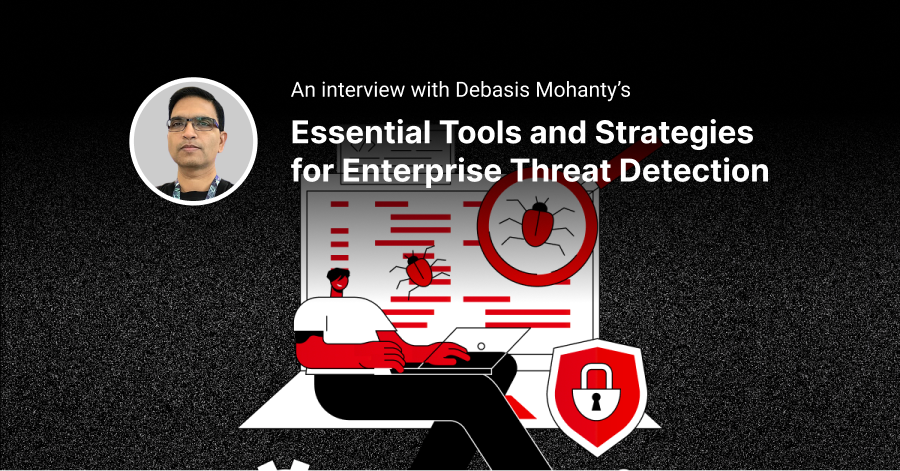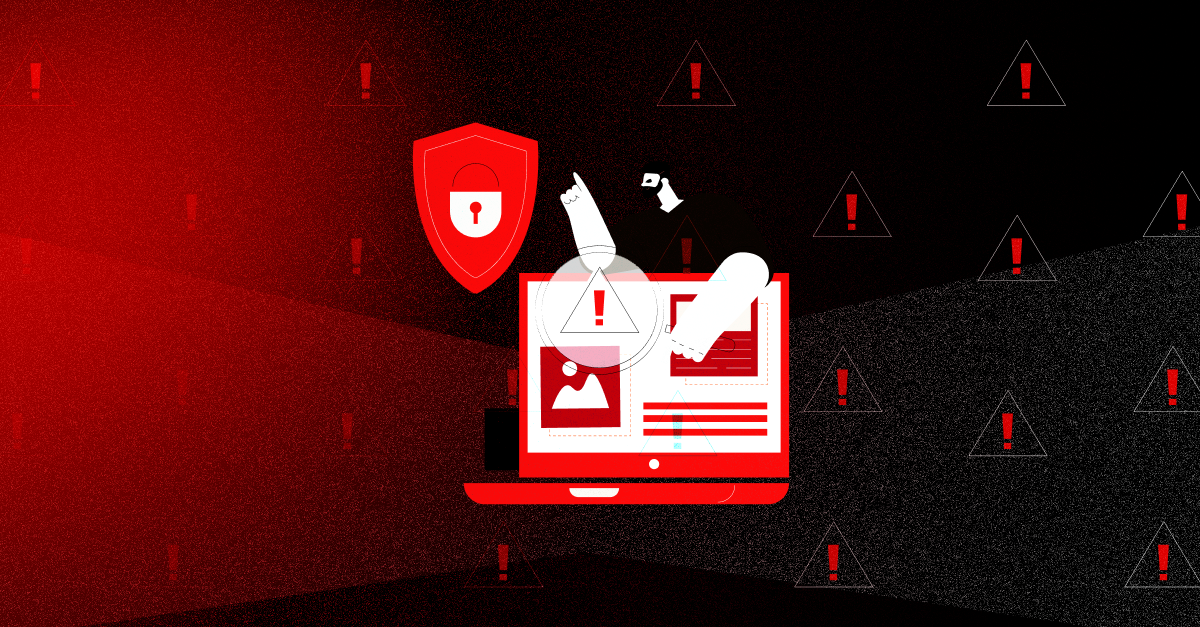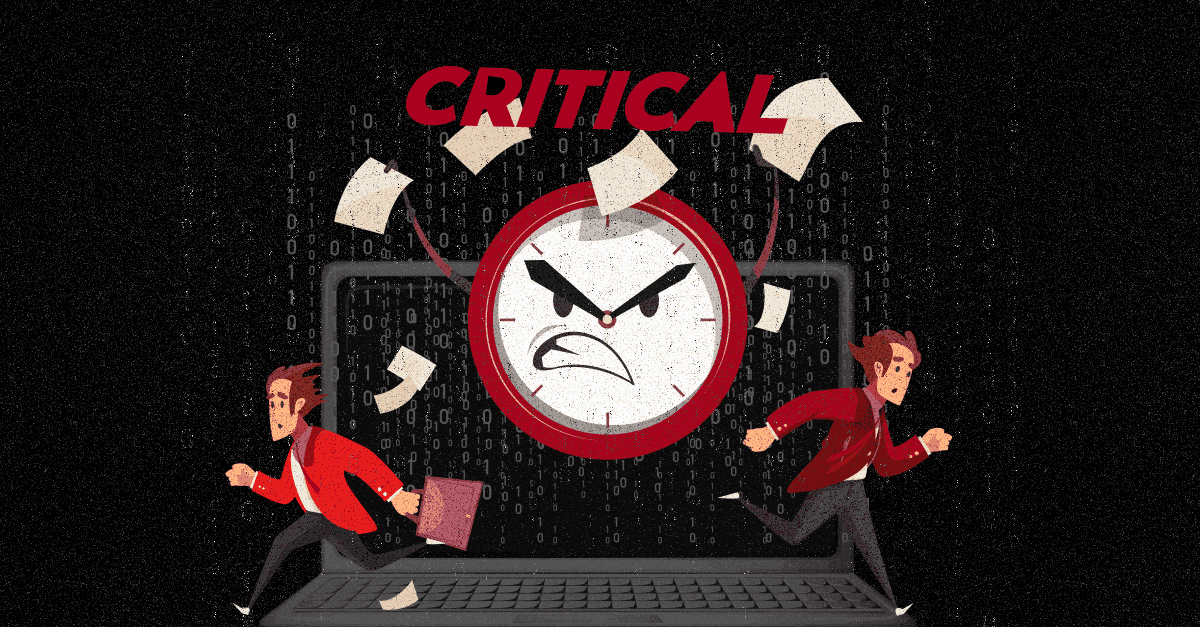Understanding Cyberattacks - Types and Prevention
Threat Intelligence • June 14, 2022

The first instance of stealing information for profits dates as far bas as 1834 when two thieves hacked into the French Telegraph System and stole financial market information. Since then, cybercrime and cybersecurity have both evolved, with each one constantly trying to outmaneuver the other.
This blog explores the details of cyberattacks - What types of attacks are there? What can you do to prevent them?
What is a Cyberattack?
A cyberattack is defined as a malicious attempt to disable computers in order to steal, destroy, or expose data, and/or launch additional attacks.
Cyberattacks can be carried out by criminal organizations, individuals, or state actors. Their motivations can range from financial profits, cyber warfare, cyber terrorism, hacktivism, spying, revenge, etc.
What are the Most Common Cyberattacks?
Malware
Malware, or malicious software, is invasive software that is intended to damage and destroy computers and computer systems. Malware exploits security vulnerabilities to break into a network, when a user clicks on an unsafe link or email attachment, which is then used to deploy malicious software inside the system. It can subsequently spread to other computers within the network or stay inside the host computer alone. While inside a computer system, malware can do the following: block access to the critical components of a network, extract data from the hard drive, and/or make the system unusable.
Malware includes several types of attacks such as spyware, viruses, and worms. It can also be used in other attack methods such as MITM attacks, phishing, ransomware, SQL injection, Trojan horses, drive-by attacks, and XSS attacks.
Phishing
Phishing is a cyberattack that uses deceptive email, messages, or phone calls to lure targets into giving up personal information such as credit card and banking details, and/or other personal identifying information. These fraudulent emails are typically disguised as ones from legitimate institutions or other businesses/people that the targets are in contact with. Phishing is one of the most commonly used social engineering techniques today. It can also be used as a starting point for other, bigger cyberattacks like ransomware, business email compromise, etc. Our blog post on phishing highlights how phishing attacks work, the different types of phishing, and how to prevent them.
Man-in-the-Middle Attacks (MITM)
This happens when an attacker inserts themselves in the middle of a two-way conversation or transaction either by pretending to be a legitimate participant or eavesdropping. Once they intercept the transaction, they disrupt traffic to steal and manipulate data. To the victim, it will appear that a normal exchange of information is taking place. The objective is to steal sensitive data such as bank account information, credit card numbers, or login credentials to subsequently carry out identity theft and/or illegal fund transfers.
Session Hijacking
Session hijacking, or cookie side-jacking, is a type of man-in-the-middle attack that grants a hacker complete control over an online account. The attacker accesses the user’s account by using stolen session tokens. A session hijacking attack can be launched in a variety of ways, including infecting the user's device with malware that tracks and steals session data, using cross-site scripting, or using vulnerabilities in the program to disclose session cookie data.
Denial of Service (DoS)
In a DoS attack, the attacker floods the target system with traffic, or information, causing it to shut down and become inaccessible to legitimate users. Email, websites, online accounts (e.g., banking), and other services that rely on the affected computer or network may be affected. A DoS attack, unlike other types of attacks, is launched to slow or crash a website rather than steal information. While they don’t usually result in the theft or loss of valuable information or assets, they can cost the victim a significant amount of time and money to deal with. The attackers' motivations could range from simple amusement to financial gain or social/political agenda.Distributed Denial of Service (DDoS)
A DDoS attack is a type of DoS attack that is launched from multiple computers simultaneously, causing the victim's resources to be exhausted. The main difference is that instead of being attacked from a single point, the target is attacked from multiple points at the same time. The network of computers used to carry out DDoS attacks is known as a botnet. A botnet is essentially a group of bots or zombie computers that are infected with malware and can be controlled remotely by the attacker(s).
Denial-of-Service/DoS attacks affect businesses of all sizes (mid/large enterprises), sectors (e-gaming, banking, government, etc.), and locations. They are often hard to detect because they usually target the network and application layers.
SQL Injection (SQLi)
Since 2010, SQL injection or SQLi, has been consistently ranked as the top most critical web application risk in the OWASP Top 10. An SQL injection attack involves "injecting" an SQL query into the application via the client's input data. This injection affects the execution of previously defined SQL commands. The malicious code is usually submitted to an unsafe website comment box, search box, or other input fields. SQLi attacks allow attackers to steal identity, meddle with and/or destroy existing data, expose all the data on the system, and gain administrative access to the database server.
Zero-day Attacks
Sometimes, hackers spot software vulnerabilities before a developer can. Such a vulnerability that is a never-before-seen security flaw is called a zero-day vulnerability. Attackers exploit the bug in the wild to expose the vulnerability to the software vendors and developers, and subsequently use it to launch a zero-day attack on the company. This attack leaves no room for detection as nobody is previously aware of the existence of the bug and don’t have a patch ready for it. Explore the 0-day in detail here - how it works, and how to prevent attacks.
Password Attacks
Passwords have always been a desirable targets for attackers as they are the most commonly used way to authorize access to a secure information system. Internet users typically prefer shorter passwords that are easy to remember. The passwords can take hackers less than fifteen minutes to crack. Once they’ve figured out the password, hackers can access critical information and systems, and later control or manipulate the system. Attackers try to crack passwords using various methods such as brute force, social engineering, by using a password database, etc. Best practices to prevent password attacks include account lockouts and two-factor authentication. Check out how to protect your corporate accounts from breached passwords
here
.
Cross-Site Scripting (XSS)
In an XSS attack, malicious code is injected into a vulnerable website. This code is typically composed of Javascript code but it can also include Flash, HTML, and XSS. Once this code executes inside the user’s browser, the attacker has complete control over how the victim interacts with the application. They can then obtain the active session cookie of the user. Hackers often use unsafe links to initiate XSS attacks.How to Prevent Cyberattacks
In the modern-day threat environment, being lax about security controls only means that you are inviting danger.
Security controls play a pivotal role in shaping the security measures that protect an organization. The main objective of these controls is to reduce the risk to an organization. Here are 6 basic security controls that can help you to more proactively secure your business against cyberattacks:
Spam filtering
The most common way for malware and social engineering attempts to make their way into your system is through emails. Spam filters can greatly reduce the risk of opening malicious attachments or links. They use global threat dictionaries with to block traffic at the source. These threat dictionaries include lists of known malware signatures that can be used to detect signatures in emails.
Anti-Malware Software
Anti-malware software is designed to fight all forms of malware, in addition to computer viruses. Modern antivirus solutions don’t just scan email attachments and notify you about potentially harmful websites, they protect you by monitoring the data transferred over networks. It offers far more protection than a simple antivirus software.
Next Generation Firewalls
Check in A next-generation firewall analyzes network traffic and implements rules to block potentially malicious traffic. They perform all of the functions of firewalls, but more effectively and with more features such as Deep Packet Filtering, Intrusion Prevention,
Threat Intelligence
, application awareness and control, and techniques to address emerging security threats.
Endpoint Detection and Response
Endpoints are the entry into an organization’s network. With the growing number of endpoints today, most hackers want to secretly install malware on to an endpoint to carry out their attacks stealthily. EDR solutions prevent the exploitation of vulnerable endpoints by providing clear and continuous visibility into the activities and events that take place on endpoints. Get a complete guide to EDR here.
Staff Security Training
If antiviruses, firewalls, and spam filters were all it took to secure yourself from hackers, there would be no data breaches. At the end of the day, the most crucial factor in effective cybersecurity is the human factor. Your employees can be transformed into your biggest security asset through continuous security awareness training. One way to do this is with a cybersecurity policy. A cybersecurity policy details each individual's roles and responsibilities for protecting IT assets and contains other guidelines on overall security. Discover 8 other ways you can train your staff to reach your cybersecurity objectives in this post
Conclusion
You don’t have to be an expert to understand that a successful cyberattack can have serious repercussions on your business including loss and theft of sensitive data, and proprietary information. However, when it comes understanding who is at risk, why and when you might be targeted, and the best way to secure your business, skilled security experts can be of service.
With our innovative product line and highly skilled security specialists, Threat Intelligence enables organizations to secure themselves against relentless cyber threats, while also cutting costs by 95%. Our specialist team probes deep into your IT environment to locate the critical security weaknesses that introduce real risks to your business. Visit
www.threatintelligence.com
to learn more about our solutions, or
schedule a demo
with one of our experts to strengthen your defenses against the latest cyber threats.
Related Content





